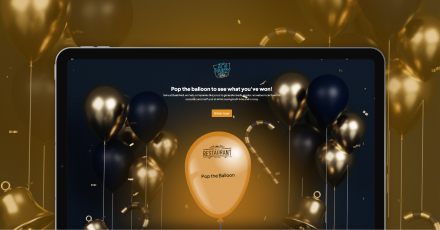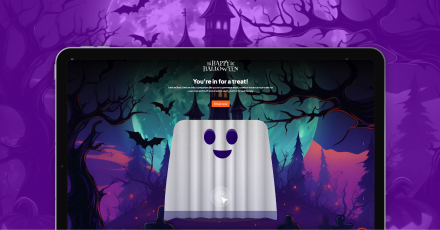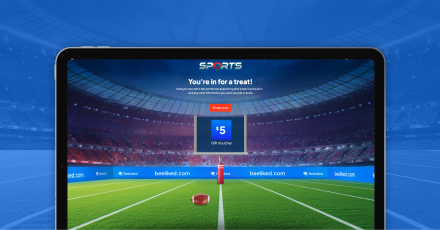Engaged employees adopt their organization’s vision, values, and purpose and become passionate contributors to its success.
Before the start of the lockdown and remote work related to the COVID-19 pandemic, research showed that employee engagement in the U.S. rose and active disengagement was at a new low. A McKinsey & Company study done a couple of months ago, just as some organizations were starting to call employees back to work, reflects similar good news. The study found that employees working remotely were more engaged and had a stronger sense of well-being.
As they move forward, companies find themselves having to adapt to a changed workforce and workplace, one where employee engagement may take on new meaning and require new approaches. In this piece, we’ll talk about the signs to look for that employees are becoming disengaged, how your organization can improve employee engagement, and how employee engagement initiatives, including gamification, can help you meet these challenges.
What Is Employee Engagement?
Engaged employees are fairly easy to spot. They:
- Are happy and feel challenged in their work, and get along well with their co-workers. They report high satisfaction with their job and maintain a good work-life balance.
- Take advantage of professional development opportunities and are eager to improve and add to their professional skills.
- Get along well with management and support an organization’s goals. They’re also rarely absent, don’t engage in workplace drama, and tend to stay with a company longer.
The value of an engaged workforce can’t be overstated. A successful employee engagement strategy built on communication and trust is key to your organization’s success.
Signs You Need to Improve Employee Engagement
Employees disengage for a number of reasons, and their dissatisfaction can have a direct impact on office morale. It only takes one or two consistently non-engaged employees to have a profound negative effect on overall staff engagement.
So, what does a disengaged employee look like?
- They find it difficult to feel or show an eagerness for their work.
- They’re unwilling to put in extra effort for success.
- They’re more likely to talk negatively inside and outside the office about management and the organization itself.
By the time severe signs like apathy, discord, and inertia appear, it can be twice as hard to improve employee engagement. Here are some more subtle signs you can watch for before things get too far along.
- Lack of initiative in performance. Many employees do their jobs well, but that doesn’t mean they’re fully engaged. They can still feel disconnected from the organization’s goals, or they might not feel sufficiently challenged.
- Unhealthy/unproductive activities. Everyone deserves a break now and then, but employees who are constantly in the employee lounge or out taking a smoke break instead of performing their job may be bored and/or disinterested.
- Lack of enthusiasm for fellow employees’ successes.
- Low work motivation and lack of curiosity about what’s going on in the organization and the industry.
With disengaged employees costing the U.S. economy up to $605 billion annually in lost productivity, something must be done.
How to Improve Employee Engagement
Most workplace problems begin when people don’t have clear direction from leadership. Their strengths go unrecognized, and they’re not in roles that bring them deep satisfaction. Once you get to the bottom of what’s causing disengagement in your organization, you’re better equipped to develop strategies that focus on improved employee engagement.
Leadership must rethink how they manage and make necessary changes to keep people engaged and motivated. Here’s how to do it.
Create an Open Company Culture
Improving your organization’s communication style can be the number one key to increasing employee engagement. That’s because workplaces that foster open communication and feedback see issues and frustrations resolved much more quickly. Employees then develop trust in leadership and want to help them succeed.
Encourage a Flexible Working Environment
Offering flexible working arrangements can be a huge motivating factor in helping employees feel more engaged. It contributes to a better work-life balance, reduces employee absenteeism, and boosts productivity.
Use Engagement Tools and Surveys
Technology has transformed how organizations interact with their customers, so why not use those technologies to better engage with employees? Tools that enable employee engagement range from work management solutions to goal-setting apps and gamification. Employee surveys can be used to measure things like commitment, motivation, and sense of purpose.
Prioritize Physical and Mental Health
A healthy workforce is crucial to a thriving business. Employees who feel their employer has their best interests at heart feel more motivated to do their part to help the organization succeed.
Employee health is not just about keeping people safe on the job. It means having policies in place that encourage healthy bodies and minds. Prioritizing employee health is important because healthy employees tend to be happier and more productive employees. Initiatives to promote health in the workplace include offering healthy food choices, in-office yoga and exercise classes, and mindfulness sessions.
Mental health is just as important as physical health. Some employees feel sad or lonely at work, even when they’re surrounded by others. Poor mental health is reflected in morale, productivity, absenteeism, engagement, turnover, burnout, teamwork, and more. The longer it’s left unaddressed, the more an employee feels unable to handle the stress it triggers. Finding ways to support employee mental health, including through group activities like gamification, can help increase employees’ ability to fulfill their potential and maintain feelings of worth.
Empower Your People
Autonomy lets employees know they’re trusted and are free to do their job without micromanaging or fear of reprisal. Invite employees to give feedback, advice, and suggestions on how things are done.
Recognize Good Work
Everyone likes to be recognized for their hard work and effort in making their organization successful. A “thank you” or “good job” can go a long way in letting an employee know you’re grateful for what they do. Employees who feel valued work harder and are more productive. That’s a pretty big return on a simple expression of thanks.
Incentivize
Just like salespeople get bonuses and commissions, rewarding non-sales staff for their hard work and commitment is a surefire way to improve employee engagement. Gift cards, vouchers, extra days off, or other incentives are benefits employees will really value.
Team-Building Activities
Employee engagement activities are a great way to incentivize, guide, and motivate employees. Gamification is one fun method that can spark engagement and increase productivity, including remote workers. Used properly, these interactive games help employees reach goals, celebrate accomplishments, and improve their skills.
Remember, employee engagement doesn’t happen in a bubble. Organizations that create a work environment where employees thrive naturally benefit from greater enthusiasm, higher retention, and improved employee engagement.
About BeeLiked
At BeeLiked, we know that people are an organization’s most valuable asset. We believe keeping employees engaged through gamification is a great way to improve morale and your bottom line. Get in touch with us today to set up a no-obligation discovery call and to learn more about how gamification can help your organization reach its goals.



















